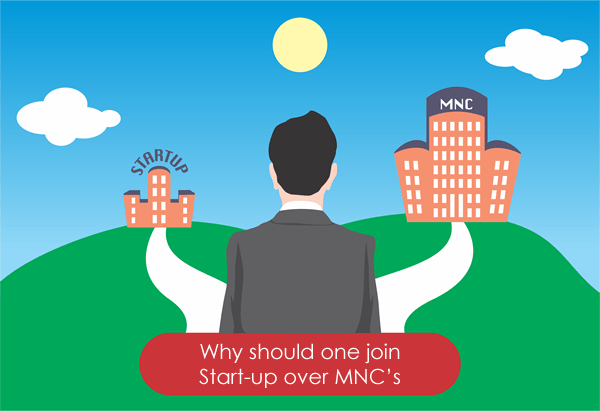
by Raghu Nandhan | Apr 24, 2019 | Blog, Industry Trends, Talent Acquisition
Hiring talent has become highly transactional. The candidate searches, the endless planning, and therefore the repetitive screening are inefficient and mind-numbing for Recruitment Trends. It’s time for a brand new era of recruiting that focuses on the additional gratifying components of the job — the human part, the strategic part.
And the lowest unemployment numbers recorded in decades are impacting those trying to recruit the most effective and brightest and forcing them to undertake new concepts once it involves hiring.
Here are a few recruitment trends impacting hiring and how they can impact you:
Diversity is the new global mindset
78% of talent professionals and hiring managers say that diversity is one of the high recruitment trends impacting however they hire.
Diversity used to be a box that the organization checked. But today, diversity is directly tied to organizational culture and financial performance. Our data shows that 78% of organizations prioritize diversity to improve culture and 62% do so to boost financial performance.
Key forces are at play here: ever-changing demographics are diversifying our communities, shrinking talent pools for companies that don’t adapt. Growing proof that diverse group is additional productive, additional innovative, and more engaged also makes it hard to ignore.
Encouraging a candidate to accept a job offer
During an associate degree, candidates would accept almost any job offer. However, within the market during which candidates receive various offers, the recruitment process changes dramatically. This means that the main focus can shift to grabbing offers in terms of remuneration packages, as well as to individual criteria of a particular candidate.
Social network pages will replace CVs
The reality is that only a few candidates have time to update their resume. And whereas you’re utilized, you are doing not update it in the least. It seems that it’s not impossible to become a candidate in principle until you update and send out a current resume. However, these days in place of a resume, it’s enough to appear through profiles on LinkedIn and realize open vacancies. LinkedIn profiles are typically a lot of specific than a resume, and they are viewed by an outsized variety of people.
Employee referrals
Employee referral programs are definitively one among the foremost productive ways that hiring talent and filling open positions. Employee referrals should never stop. Referrals offer quality hire, not as results they recognize someone; however as a result of the most effective worker will usually even outperform recruiters in building relationships, evaluating and selling extremely qualified professionals who are not active in the labor market. In top companies, more than 50% of employees are hired through a referral program
That being aforementioned, we tend to put employee referrals to our list of best recruitment trends for 2021!
Artificial Intelligence is becoming your secret workhorse as a part of Recruitment Trends
Admittedly, this can be one in each of the trends that everyone talks regarding however only very few organizations or professionals understand its impact or what it really means.
The truth is that Artificial Intelligence (AI) has taken a powerful foothold in recruiting and can possibly still continue to take over a number of the repetitive aspects of your job. For example, there’s already software (including LinkedIn Recruiter) that permits you to modify candidate searches and quickly notice prospects that match your criteria. Other technology will assist you screen these candidates before you even speak to them. Chabot’s will reply to candidate queries thus you don’t need to.
Multiply the effects of these examples and the time savings is huge. For the more additional advance aspects of your job — engaging and interviewing candidates — it’s no surprise that AI is seen as less useful.
The HR and recruitment field is evolving every day and with a global workforce transforming, it is time to elevate your company’s recruitment strategy to a whole new level this year.
Connect with us: 



by Raghu Nandhan | Apr 18, 2019 | Blog, Recruitment Technology, Talent Acquisition
In 2011, only 54% of recruiters believed we have a tendency to be heading towards a candidate-driven job market. The time (and the numbers) has changed, and today, 90% recruiters agree on the crucial role of candidates in any hiring plan.
A candidate’s opinions of your organization are going to be formed nearly entirely by the recruitment method. Consider their first initial point with your company as a primary date. While it’s crucial for the candidate to sweep the recruiter off their feet, recruiters usually forget however it’s is necessary for them to make a positive impression in favor of the organization.
After a nasty candidate experience, 72% of job seekers report sharing their encounters online. This alone will severely diminish an organization’s complete equity and stop future candidates from considering them as employers. In fact, 55% of job seekers report avoiding bound corporations when reading negative reviews.
Every interaction with a candidate sends a transparent message concerning the organization. Let’s examine some common enlisting mistakes, and also the message they send to smart candidates that may scare them away.
We explore the reasons behind this shift and share five trends in recruitment for 2019.
#1 The Rise of the Employer Brand
Studies by LinkedIn show that over half of job seekers conduct thorough research about a brand before applying. Now, for SMBs this could be a challenge — mid to large-scale companies have an established online presence and even word-of-mouth repute, small employers risk coming off as unfamiliar and uncertain. In 2019, this section can invest heavily in employer branding initiatives so as to draw in high talent.
“To build a strong brand, CHROs must have a dedicated tech team focused just on HR technology. Employer brands are maintained on the underlying technology that supports their initiatives. The Best practice is to have the tech team report to HR, not to IT. Technology moves quickly, so having experts focused solely on HR’s direction and initiatives are imperative. CHROs must be ahead of changing technology.
#2 It’s Social All the Way
2019 is a generation that’s grown up online, using social media to shop, ask for recommendations, and even job hunt. While social recruiting gained plenty of momentum in 2018, next year it’ll be a must-have. Further, in a candidate-driven job market, social media may be a bigger game changer holder recruiters realize and connect with passive talent.
#3 Drawing out the recruitment process
The interview method can be lengthily based on companies hiring policies. The overall method can take an average of 23.7 days. While a good candidate may be considering your organization, they’re likely possible considering different companies as well. By drawing out your process, you are communicating to a good candidate that not only is you still not sure about them, but they might not be your top pick. As a result, sensible candidates could withdraw themselves from the pool. Having multiple screening ways beyond the interview (IQ tests, presentations, panel interviews, etc.) also slows down the process and build more hurdles that scare candidates away.
Eliminate any uncalled steps or meetings, and make an offer as quickly as potential. Remember, if you string candidates on and treat them poorly, they’re going to possibly share their experience on sites like Glassdoor, thus communicate transparently and regularly.
#4 Proactive Recruitment Marketing Strategies
Recruitment promoting has been around for a minute, however specific campaigns are typically connected to a forthcoming hiring event, a spike in attrition, or seasonal shifts. In other words, it is reactive in nature. In 2019, this is poised to change with recruiters investing in solutions or partnering with agencies, helping create a continuous conversation around the company — and thereby boost candidate interest levels. There are already a number of recruitment marketing tools available like LinkedIn Talent Solutions or Breezy HR, and more will join the list in 2019.
#5 Forgetting to sell the company and opportunity
Finally, keep in mind that as a recruiter, you’re attempting to sell a candidate on your organization. It’s necessary to be clear about the realities of the job. It’s also crucial to share positive information about the culture, highlight their growth potential, and always ensure the candidate is completely informed of all aspects of the role they are interviewing for. Like in any sales cycle, you must close the positions!
Losing sensible candidates to a bad recruitment process will solely harm your talent pipeline however can influence how candidate interact with your brand and products at the end of the day. The best candidates perceive that interviewing could be a two-way street, this information should be shared each way, and candidates should be treated with respect and value!
Connect with us: 



by Raghu Nandhan | Mar 15, 2019 | Blog, Recruitment Technology, Talent Acquisition
Can you answer these questions?
- How many contractors do you use? How many suppliers?
- Are your labour rates at true market price or better?
- What percentages of your contract spend goes through preferred suppliers?
Drawing a blank? If you are not sure what the answers are, that’s OK. It’s likely that you are either new to using a vendor management system or you are currently researching VMS solutions for possible implementation. If you’re not familiar with VMS solutions at all, you’re in for a treat.
Today more than 45 percent of the world’s total workforce has become contingent workers. That includes temporary workers, independent contractors, SOW-based labour, and freelancers.
Most organisations report that they expect their need for non-employee workers to grow more in near future. The problem is that every other organisation is looking for non-employee workers to grow their businesses. So how can you source and manage your extended workforce effectively and efficiently so that you don’t lose the war for talent?
The short answer: VMS.
The way organisations employ workers has shifted away from the full-time employees of yesteryear to a workforce of contingent workers that offer their specialties on a project-by-project basis.
The contingent workforce has significant benefits for the plethora of companies adopting this modern way of hiring. However, those who are hiring contingent workers but are still using manual processes and outdated automation tools to manage their workforce, will not be realizing those benefits, and could in fact be losing out.
This is why a vendor management system (VMS) is fundamental to the success of your contingent workforce management strategy.
The first step is to understand the five core benefits of a VMS—for both procurement and HR. Those benefits include:
- Cost Effective: Contingent workforce expenditures rank among the top spend categories in most organisations. Perhaps more troubling is the fact that most contingent labour is not taken into account when conducting financial planning, forecasting, and budgeting. That means that you may be spending more than you should. In fact, VMS user’s report 80 percent higher year-over-year cost savings compared to non-VMS organisations.
- Clarity: Lack of clarity is one of the key reasons organisations do not know what they are spending on contingent workers. Ardent Partners research indicates that organisations only maintain visibility into 45 percent of their total contingent workforce.
- Compliance:When it comes to contingent workers, if you do not know “who” is doing “what,” “where” they’re doing it, and “how” it is being done, you are setting yourself up for failure. Two important examples that come to mind are misclassification of non-employees and allowing unauthorised individuals access to systems or facilities.
- Quality Matters: The entire goal of leveraging the contingent workforce is to attract, retain, and utilize the best possible talent. A VMS can reduce time to fill and expand your access to quality talent. Some vendor management systems even allow you to source talent directly from the VMS!
- Efficiency: A VMS also drives efficiency by allowing you to automate procurement cycles, consolidate billing, and ensure invoice accuracy. It also makes it easier to measure and monitor your supplier performance. That will help ensure process and performance consistency.
Remodelling VMS Requirements
Today’s organisations increasingly need VMS software to manage both contingent workers hired as individuals and external companies doing project-related work. Many also have a greater need to stay compliant with international labour and tax laws surrounding global use of contingent staff.
HR and procurement leaders should use some key criteria if deciding to switch VMS providers or invest in a new system
- Support for Statement-of-Work Contracting
One of the keys buying considerations today is whether the VMS will be able to support you as you move from using it for the selection and tracking of contingent workers, to the selection and tracking of project consultants
Managing project work is more complex largely because of the different pricing mechanisms involved. Payment in these arrangements is not only time-based, it might also be milestones-based, deliverable’s – based or tied into performance on service level agreements. You’d like to be able to use the same software tool when you have the need for an individual contractor as well as a consulting company.
- Ease of Integration with Existing Systems
A VMS should integrate well with your existing technology platforms or processes for managing contingent staff. Many companies have reaped benefits from integrating its VMS with a core human resource information system, purchase order request system, supplier relationship management system and a security system for contract workers.
The integration reduces multiple steps from multiple systems and put them all into one easy-to-use, one-stop platform.
- Robustness of Analytics Tools, Bench-marking Data
The quality of reporting tools also separates VMS providers. One key metric is a time-and-tenure report that ensures contingent workers don’t work beyond the specified limit for co-employment.
- Vendor Neutrality
Vendor-neutrality means the system isn’t provided by a VMS owner who will steer you to contingent resources which may not always be the best or most cost-effective. This can be a concern if the VMS provider also has other contingent staffing services under its organisational umbrella.
Hopefully, we’ve covered all the basics of vendor management systems and you have a good idea of what to look for in a VMS.
At Pragna, we have the experienced team who understand the fast paced VMS environment and can submit potential candidates within a few hours of receiving the job orders. We have a good track record of supporting many customers with VMS support services and understand the nuances of working with such a system.
We at Pragna expertise in providing Customized RPO, Offshore Recruiting Service pertaining to all the Industry verticals, We strive hard to apply best practices, proven methodologies, and additional levels of diligence to improve the quality of our services.
A blend of ground-breaking ideas, detailed approach, and quality-oriented delivery has positioned us as a leader in the Recruitment process outsourcing (RPO) industry.
Connect with us : 



by Raghu Nandhan | Nov 14, 2018 | Blog, Industry Trends, Talent Acquisition
A start-up is a company working to solve a problem where the solution is not obvious and success is not guaranteed. There’s something incredibly adventurous to work in start-up companies. Maybe it’s the lack of bureaucracy and office politics or the freedom to create ideas and make decisions. Either way, many job candidates are attracted to the start-up environment. But this doesn’t mean that start-up companies are right for everyone.
Are you considering a jump into the start-up industry, than there is a series of questions you must answer to yourself to find out “Do you actually fit in a Start-up?”
- How Can You Solve the Company’s Problems?
Start-ups have too much work to do and not enough people. So if you are capable of solving the specific problems a company faces and get results, many other concerns goes the side way. The main one left is cost and your interest in the job shouldn’t be about money, but rather fulfilling specific personal goals or mere learning.
- Does your Passion connect to the Company’s Mission?
Convictions and motivation are way more important in a candidate than experience. Wanting to work at a start-up is a terrible motivation for applying. A good motivation is finding a company whose mission resonates with you, whose values align with yours, and whose goals work perfectly with your skill set.
- Are you a Multitasker?
Since most start-ups financially aren’t able to fill all of the positions they need. They expect to do significant savings by combining two or many staff positions into one. That way, the cost of benefits can drop significantly. So if you are capable of wearing multiple hats without taking a toll on your focus and productivity then you are the right fit.
- What are your Intrinsic and Extrinsic Motivations?
It’s important to figure out your motivations before you start working in a start-up. Inevitably your start-up career will go through extreme challenges, and this understanding will be called upon. Extrinsic motivations could be salary and benefits and intrinsic motivations could be purpose, mission and learning. But it’s important for you to articulate your motivations and have clarity on what it really means.
- Do you tend to push the Boundaries?
If you are a person who likes to be in your own comfort zone then think twice before joining a start- up. Start- up environment seeks candidates who put continuous efforts to achieve a task and tend to experiment new, pushing their boundaries every time.
- Do you have the Entrepreneurial Spirit?
The best start-up employees think like entrepreneurs and are prepared for the challenges. They have Creating something from nothing attitude. Working at start-up involves working with different types of personalities, keeping an open mind, always staying true to yourself and speaking up when you have an opinion.
- Are you Accountable or Do you have sense of Responsibility?
Successful start-ups have no place for sycophants. You have to show that you are willing and able to not only come up with ideas, but also defend those ideas and implement them. You can adapt and think on your feet.
So analyse yourself before thinking to start you career in a start- up. If you have a “YES” for all the above questions then you are right fit. If not kindly drop down the idea and focus on improving your Entrepreneurial skills which could help you in many other ways.
If you’re looking for top tech talent to power your start-up and strengthen your culture, try Pragna Solutions today.
And if you enjoyed this post, it would be great if you’d help it spread by emailing it to your friends, or sharing it on 

 . Thank you!
. Thank you!

by Raghu Nandhan | Aug 27, 2018 | Blog, Company Insights, Talent Acquisition
“When building the perfect team, the single most important thing is to bring the right people”
Finding the right people startups will inevitably reach the point where they need outside help to keep growing. Retaining the talent to help grow the business is a problem.
The initial problem which most startups face is finding the people suitable for the job.
Budgets are usually low for open positions in startups. Where the startup organization pays very well, there is a risk of offering too high salaries to candidates as well. As a result, they either quit sooner or their performance goes down due to stress.
- Lack of Brand Recognition
This is quite obvious because the organization is newly set up and applicants may neither be aware of the upcoming brand. To solve this problem, startups can try to build a larger brand image using free platforms, such as on social media, print media and more.
- Not knowing what you want
Being unclear about any part of the job can lead to a potentially bad hire.
With a clear idea of what you need, it will be easier to see those skills in the candidate.
- Having an unclear hiring policy
One of the most critical mistakes a company can make is failing to define its hiring policies before beginning an employee search. An unclear policy can confuse the hiring managers and candidates at best
Starting it out as a small company, most often they have a lot to compete against; big branded companies, startups, other small businesses.
The less number of resources available at hand can prevent better hiring.
The true art of recruiting is combining knowledge of the company’s unique culture so that both parties succeed and grow together.
- Challenge of Finding qualified candidates
Finding qualified candidates as dozens of applications from unqualified candidates waste a lot of time.
- Not Conducting Market Research
Most startup recruiters fail to focus on the huge talent pool of passive candidates and lose out in the process.
Candidates always look for the reputation of the company in the business. Reputation is earned with years of quality services. It’s not something to achieve overnight.
Marketing battle matters a lot in successful startup business. It’s hard for a new firm to access specialised recruiter for marketing specialists for advertising.

by Raghu Nandhan | Aug 10, 2018 | Blog, Offshore Recruitment, Talent Acquisition
As you probably are aware, Outsourcing is a regularly developing industry.
Outsourcing has witnessed a massive boom over the past decades. Outsourcing has revolutionized the way business is done in almost all sectors.
Outsourcing has significant importance to not only businesses that choose to engage in said activities, but also to the citizens of any country with involvement in outsourcing. Businesses now face a growing array of factors influencing outsourcing and it is imperative that they understand the nuances of outsourcing so that they may readily adapt to a rapidly changing global economy.
While there has been a constant growth in this sector, there have also been several new trends, which have emerged and stayed for the betterment of outsourcing.
Emerging of New Technologies
Emerging technologies such as cloud computing, social media, software and automation are being used by BPOs to reduce costs and accelerate growth.
Process Automation
New technologies that have emerged over the past few years including robotic process automation (RPA). RPA with its cost savings, speed and efficiency is slowly making its way into all industries and all types of business processes. Bring on the new era of AI which has taken over RPO (Recruiting process outsourcing). This will have a major impact on how BPOs operate and lead to jobs losses.
Focus on Social Media
Companies now realize that social media is a game changer. It provides an unprecedented wealth of consumer data and feedback that can enhance a company’s ability to analyze upcoming trends and to innovate. Instead of call centers, companies now want to invest in real-time customer engagement that will allow them to gain first-hand product insights and turn issues into new products or solutions that will address future problems.
Use of Cloud Technology
The cloud technology is likely to become the path for the outsourcing. With more usage of cloud technology businesses are working efficiently. Also, it will give further impetus to these firms to deliver innovative products and services to customers depending on the latest market trends.
Higher Efficiency and Competence
The outsourcing industry is now edging towards automating process utilizing the latest software and other computer programs in the process. These technical tools will shorten the tech support to enable services and also resolve consumers’ problems on time.
Digital Transformation
Companies are adopting online services, social media marketing, email promotion, and mobile marketing greatly.





